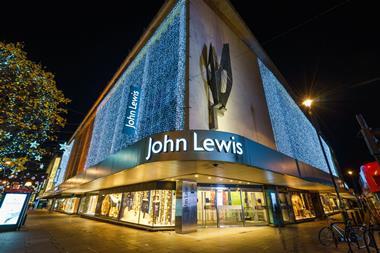Sears, the US department and variety store group, continues to break off parts of its business to generate equity returns and help reverse underperformance.

Like-for-like sales declined 3.7% for the 12-week period ended October 26. Like-for-like sales in Sears’ domestic stores and Kmart stores fell 4.8% and 2.6%, respectively.
The retailer has endured declining sales since hedge fund manager Edward Lampert merged Sears and Kmart in an $11bn (£6.89bn) deal in 2005. Since then the focus has not been on building a better retailing business, but creating equity for shareholders. Herein lies the crux of its problem.
Both Sears and Kmart are facing intense competition, namely from Target, Walmart and Amazon.
However, the business has failed to keep pace with rivals. Lack of investment in stores and merchandising has dented performance and chances of fending off threats. Efforts to improve the offer, mainly through celebrity fashion brands from the likes of the Kardashians, have been somewhat lackadaisical, designed to merely grab headlines and drive shoppers online.
While the intention of creating a marketplace to rival Amazon is sensible, it does little to reflect the Sears and Kmart brands. Moreover, to truly cater for modern shopping habits, investment in multichannel is required, which means improving the in-store experience. This is not on Sears’ agenda.
Indeed, it is shutting stores. Once all underperforming ones are closed, what remains will be those in desperate need of a refit. While right-sizing will enable greater investment in renovations, with focus on equity return from other assets, stores are unlikely to become a priority.
In seeking equity returns from its operations, the retailer is spinning off clothing retailer Lands’ End, which it bought for about $2bn (£1.25bn) in 2002, into a separate business. Sears employed such a strategy earlier this year with Sears Home and Outlet. Lands’ End joins a growing list of disposed assets, including almost half the ownership in Sears Canada.
While focusing on profitability through cost control, efficient inventory management and merchandise initiatives are helping inflate margins, they are unlikely to drive sales growth. Stores remain unloved and brand equity languishing.
In pursuing a strategy of seeking equity returns rather than building a retail business, Sears’ days as a true retailer might be numbered.
- Malcolm Pinkerton, research director — ecommerce, Planet Retail.
Planet Retail
For more information contact Planet Retail:
Tel: +44 (0)20 7715 6000
Email: info@planetretail.net


























No comments yet